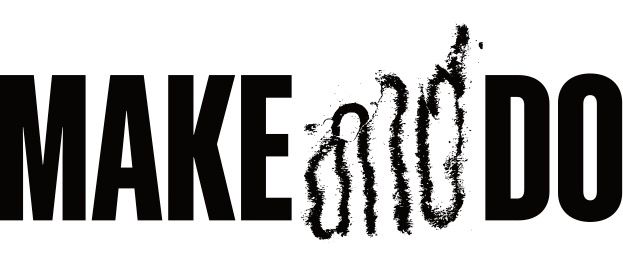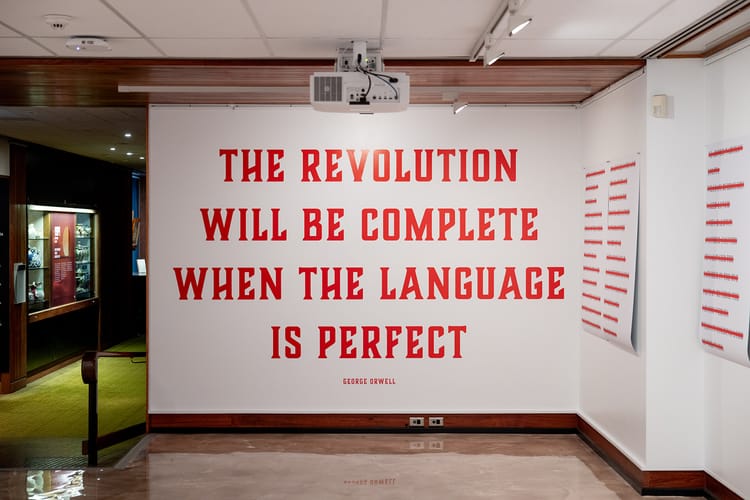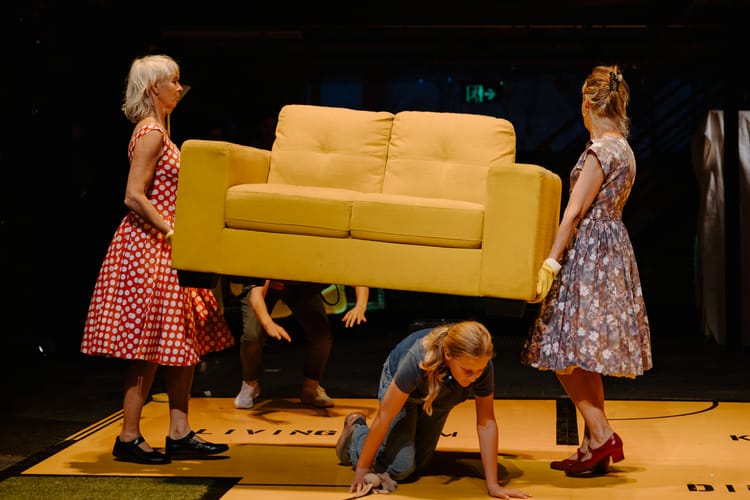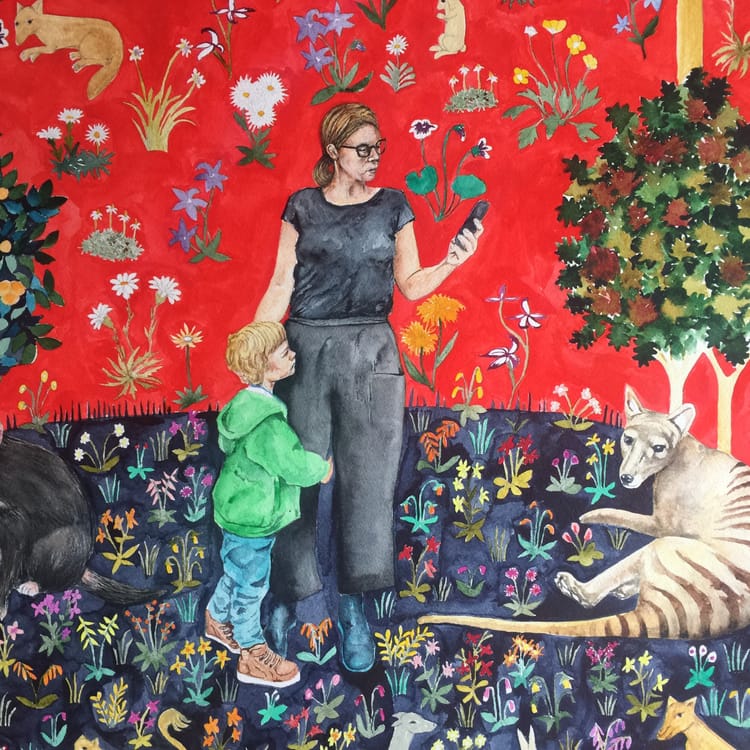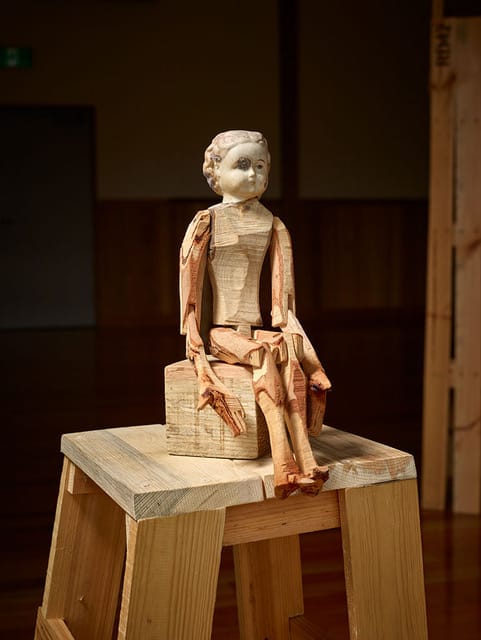Devices and desires | Feb 2024
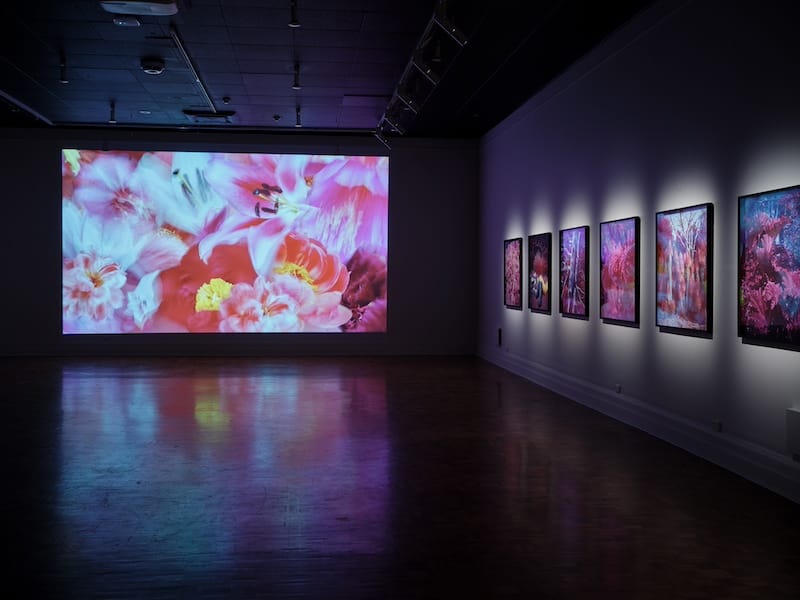
Hello – by the skin of our teeth – February.
Here’s the longest thing I’ve written for Make and Do thus far. It needed to be long because the exhibition was huge and I really wanted to get stuck into the work. This meant it took ages. Also, I threw out a huge chunk and started again at one point, and that hurt but here we are.
I’ll keep this a bit short as you are about to read something long and that’s probably a lot to ask in this hectic world. I’ve hardly had a moment to crack a book even, as all the writing and the stuff of life is enveloping. Nonetheless I did find myself watching Nemesis, that thing on the ABC about the LNP, and my lord they are basically cannibals and it’s utterly terrifying that they were even in government at all.
A quick note (as there's already a whole email about it): we've just launched our 'Services for Artists' thing - Pip and I using our combined skills to help you with your writing (bios, statements, grant applications etc) and creative projects. If we can help you, let us know. We are happy to have a one-off squizz at your artist bio, or work in a more on going way. Email us: makeandrewdo@gmail.com
Alright, dig into this and I’ll see you soon.
Notes on Epoch
Tasmanian Museum and Art Gallery
Wona Bae and Charlie Lawler, Lou Conboy, Isabella Foster, Rochelle Hailey, Arushi Jain, Nathan Maynard, Georgia Morgan, Florence Shaw, Tricky Walsh
Okay I have to admit it: I’m hamstrung.
I’d been trying to write about Epoch for weeks, since it opened, when something that’s not exactly connected with ‘the work in the show itself’ tripped me over.
You see, I discovered that the homeless population of St David’s Park had been moved on, or something. I went to the park initially to see an artwork I really liked, and the people sleeping rough there were pretty visible. I heard later that some rocks had placed under the pine trees where they’d been camping, and that upset me. People have to go somewhere and simply moving them out of your nice central park is no solution. In my head, the placement of the art and the non-presence of some people who are doing it hard became entwined, and I wondered if it was important to question that, despite not really knowing what to do about rough sleepers beyond giving them stable accommodation right now, today, not next week. I know this is apparently a complex issue, but I don’t think people need to be good or fill any criteria to be housed. I think that getting people housed is the fastest way to support them to do everything else they need to do. I also have to note that when you get art that’s ostensibly funded by a city, the art becomes, at least in my mind, involved with just about all the things that a city might do, and all the things a city does. Actions do not happen in a vacuum; things are possibly always connected and sometimes you can’t just look at an artwork and amputate it from contextual frameworks. This sucked, because The Depths of Intimacy, a beautifully placed musical composition by Arushi Jain really worked for me – hearing the beautiful electronic tones wash at a discreet but audible volume through this outdoor space on a gorgeous day really moved me on the day I saw it. It was only after my visit that it became sadly tainted.
And that’s sort of all I could think about when it came to Epoch, and I am sorry Artists, because you made some good work for the actual show. You made some work I really liked. That I do like. I think the work from Nathan Maynard is intensely powerful, particularly for a work that is not ‘finished’ because it involves waiting for someone to die, so that a next stage of the artwork can occur. This is intense, because we have a palawa artist who is in negotiations with a man of European origin, and that brought something strongly to mind: the actual average life spans of a European coloniser and someone who’s one of the first people of what we now call Australia: First nations people don’t live as long (if you want that spelled out). According to this information, that gap is changing, but that’s pretty bare and there’s a lot that it doesn’t really mention – like deaths in custody. Which are still happening.
Nathan Maynard’s Relics Act is about a lot more than these numbers of course, and to be honest, I haven’t really stopped thinking about the implications of an art work that seeks to respectfully bury someone when the person who wants to make the work represents a people who have been so utterly disrespectfully treated in death. I watched the film and thought about the way Aboriginal people from lutruwita were treated like specimens or trophies, and also thought of the processes gone through to actually have the bodies of people returned to their country. Of course, the more I delved, the more I found out that was simply horrendous[1].
Nathan Maynard’s response to all of this was to act with what I’m seeing as a form of grace. He doesn’t do that. His mob don’t do that. They treat people and the dead with utmost care and respect. And this is simply the start of this work, and I’m still considering the impact, the attempt to access time and mortality through art, and the discussions this might ignite. Yeah, it’s good art, and it’s also superb activism. I am, almost as ever, totally humbled and blown away by the art produced by Aboriginal people of this place; there is an unending conversation, and we are, again, long overdue to have it.
Looping back to my issue: Nathan’s work is art rooted in real world issues, it does not exist to comfort us or to make us feel better or make the world go away for a moment, and while I cant say there is a right and wrong way for anyone to come to art, I don’t think we can escape from all art having a political context it sits in; even saying one’s art has nowt to do with politics is a political statement, and a highly privileged one. I’m not saying that you can’t have art that makes you contemplate the sublime, or is just beautiful, because that’s valid and important too, and part of why we need art as well, but I encounter again and again an idea or a statement that 'art is supposed to be beautiful', and to me, there are many forms of beauty, and that some beauty shows us difficult things and asks to have difficult conversations.[2] Nathan Maynard has made a work of powerful beauty, because what is more beautiful than truth?
Georgia Morgan’s work was great. I think it might have been the best thing I’ve seen from this explosive young artist since her contribution to re-member, an excellent show at CAT in 2020. That work, Floating Signifiers, if you saw it or know it, absolutely grabbed me, and I’ve sort of been waiting for her to do something that energetic and un-contained ever since. She’s not been idle of course, but that show was a hard act to follow, and I’d keep seeing her work and thinking ‘yeah it’s good, but that thing was wild’. HERE, NOW AND AGAIN, (AND AGAIN, AND AGAIN) had that energy and weirdness, and I was most gratified to see it again, and in a different form as well: Floating Signifiers was an installation, here we see paintings, and interestingly, Georgia seems both more confident and less confident at the same time. I think she’s more comfortable as an artist than she could have been in 2020, but is also aware that she doesn’t have all the answers, but also that she doesn’t have to.
What do I mean?
The work looks like it’s engaged with something traditional in form (I’m reminded of really old painted images on a stone wall in a building that has intense significance but has also been sort of lost to time). Georgia creates stuff that’s kind of enigmatic while also being kind of funny, she’s self-effacing but clearly committed, and this sequence feels like partly abstracted mythology or lore. The forms and shapes here remind of something that’s involved with religion or traditional belief, but it’s mixed in with personal takes and gestures – this is one of those artists whose hand is really visible; the artist is very present[3], very embodied in the art that you see.
Present Being, the Wona Bae and Charlie Lawler work left me a bit cold. Art like this tends to do this for me, and it doesn’t mean its poor art, but more its not in my wheelhouse. This is worth noting in itself for anyone who is regularly reading what I write about art – I’m all about subjectivity and very much about the personal end of that. This could be something of a cop out, but I’m too aware of the sheer amount of work artists do to dismiss them outright at any point. There’s not much art I hate – I mean I probably have issues with overly right-wing art, and I’m troubled by schticks and lever-pulling, and Present Being is neither of those things – its just that to me, the notion that the work was addressing climate breakdown wasn’t initially apparent. It’s still a solid work, but I do have broader concerns that this has sparked about how we use art to address complex issues; climate breakdown is interesting one because we cannot see it, we can only read data and then potentially experience the effects, which some places are and anywhere that there’s been a bushfire in recent years certainly has. Art has a potentially powerful function here, so Wona and Charlie are attempting to do something extremely important, and I hope they do more of this kind of work.
A favourite was Lou Conboy’s work. It made me out loud when I saw it, with fairly unbridled joy. Ignition’s central work, a huge animated vision of flowers and buds opening and expanding was intensely erotic – charged with energy and fecundity. It’s an insane amount of work to make something like this, with so very many moving parts, but its wow, was it worth it: the moment where life and nature starts, where germination or conception or whatever it is that life is, is explosive and actually filled with wonder, and should be celebrated in all its messy, sticky glory and this work does just that. If you need art to be beautiful, and you think that’s what art is[4], then surely this is Art as a concept writ large. It’s a real celebration of the lushness of Lou’s imagery to date, and while it’s a culmination, it also feels like an ambitious point of shift and growth – which is pretty much what it’s portraying. The accompanying series of photographic images suggest that the aura of mythology and wonder she’s long daubed subtly over her work are still very present, and that the video piece has something in common with a creation myth; there’s always been hints of things like the myth of Sisyphus and the figure of the crone or witch-outsider in the work so there’s also an expansion of the underpinning narrations and lore that suggest that all of Lou’s output is a rolling, personal investigation of feminist magical realism. It’s also just so invigorating to see more work from such an ambitious, thoughtful artist.
Where are we?
I’m writing this in fits and starts; writing it around life. It’s exasperating but it’s also good because I’ve been forced to contemplate and reflect on initial reactions to works, and that’s not a bad thing to do. I’ve now decided, as an instance, that Tricky Walsh is quite definitely writing speculative fiction in the form of epic paintings that, in this case, hark back to a far earlier era of their career: a LONG time ago, there was an animated film, which featured some hints of forms and concerns that are still around in Tricky’s work, and also remind me of how long I’ve had the privilege of watching everything develop and change. I will say this forever: there’s nothing like the long game and watching an artist’s practice as a narrative in itself. Some artists arrive at something and that’s the thing they are now going to do (apparently) for the rest of their career; others never do this and are on some kind of weird quest that will never end. It might be more academic to call it An Investigation, and maybe that’s fine as well, but with Tricky the work isn’t so dry: there’s some real passionate anger right at the back of the work, and probably always has been. Anger about things like algorithms controlling how we receive information, about human rights and climate emergencies and the assaults on LGBTQ+ people and more importantly, how this all intersects, and it’s all tackled as a mesh of science fictionalised horror-satire embedded in paintings that move. I think of science fiction novels that are based on exacting research about what could happen, and are essentially complex thought experiments that can also function as satire.[5] Tricky paints rather than writes, but there are always words: cryptic, but you can sift an idea out. The Weight of Things is possibly about how AI might change things, but there’s also a suggestion that the sheer weight of all the information we now have, and have to deal with[6], is an entity in itself[7]. It’s a beautiful work but the real energy here comes from the ambitious attempt to synthesise a narrative that asks of the shape of things to come, and asks how we might feel about this. It also has neat moving parts you can view with an app through your phone, and there’s a potential metaphorical question about how we view everything through the mediation of a device now.
Devices.
Isabella Maria Foster comes across as Extremely Online; her work engages with what we call Internet Culture, or it looks like it does and she has more beneath the surface and in different places. I’m starting to see her as an artist who is making one large sprawling time-based artwork that’s about herself, that uses her body as a site for various kinds of commentary on culture and women and the representation of such in this era of Late Capital, of digital life, of devices and filters and social media posts. Anything is her medium, from drawing to making neon signs to performance, and these things are a palette more than anything else. Making a neon sign is retro, but which retro it invokes is a good question; neon can be a signifier for a series of differing eras and it’s a medium anyway, so it comes with the eras it’s been representative of as part of anything you make out of it – it’s an 80s then, and retro-80s then, and vapourwave, and skipping girl vinegar[8] all at once, so the medium adds weight and historical implication – as does the colour of the light, the history of the font used (all fonts have histories and some are really quite old so come with a particular historical weight that add to all the potential readings that already exist before we even get to the phrase). Everything is intentional, everything has meaning, there are implications and undercurrents. Isabella is not simply talking about the internet; what she does is place our usage of the internet in a historical continuum of mass communication and human interaction and exchange[9].
Florence Shaw’s Plenty mechanically haunts a small building – the TMAG Private Secretary’s cottage. Passages of poetry drift around one of those heritage buildings we know well in this town, kept empty to preserve for history. Florence’s poem is a drift, and it forces you move about the space, not quite telling a story, but sifting something out of the walls. Sound art that’s this site specific is interesting, at least, and the manner in which this floats in the space alternated between a notion of the building speaking its oblique truth and the words being swallowed by the physical history one walks and stands in. I liked the idea that I could have been hearing something that time had inscribed into the materials of the building very much: it’s a sensitive, reflective piece, and very direct. You know it’s a recording, but it was possible the recording itself, the voice, the intonation, was recorded long ago by the space itself. At least that’s how It felt to me.
Skylight Arcade, the Rochelle Haley Sculpture that floated above the small alley we call Purdy’s Mart was a decent work in itself but I’m unsure it worked as well as it might have where it was installed, although the idea of a secret beauty floating in space that you miss unless you slow down and look up was quite pleasing. This was the problem with it – I couldn’t quite see it. Sorry Rochelle, I’m unsure that the artist made this decision, but whoever did – I have to say I don’t think this presented the artwork in the best light to engage with it – but y’know, I’m not sure where I’d have put it myself. The question does emerge for me here though about art being used to activate a city, and while I like this sometimes, it’s harder to do than it looks, and can feel a bit forced. I do love the idea in principle though; art that escapes galleries and exists in spaces where people who don’t go out of their way to engage with art is really important, so I don’t want this practice to end – it’s just that its very obvious when it works, and very obvious when it doesn't.
Okay, if you’ve made it this far you get a certificate. Epoch was, overall, great even though I had issues, and still do, because I feel art and artists and curators are not separate from and do exist as part of a broader community. I think art can be an important agent for social justice, and I question sometimes how art is being used, and if there’s an issue – which I found here, although it is quite hard to be definite about – I think we need to talk.
We can’t change the world with art, but we can’t let it be a smokescreen either. I look forward to the next iteration of Hobart Current – it’s been wonderful so far. I also look forward to better solutions for people without accommodation in lutruwita, and both things are possible. A lot of things are possible. I would really like us all to work together to realise possibility, but until then, I must do the thing I can: write things down and tell the story.
[1] Here is one of a number of searches I did around this topic, and there’s some full-on stuff in here. I am really struck by the sheer volume of bureaucratic requirements to make something like the return of remains occur, the language used, the problems that even when ‘agreeing to return’ (have a good think about that phrase) institutions can want samples – want to do a bit of drilling, or hang onto a tooth. This is also not just the Old People of lutruwita either (to really spell this out); it’s happened and happening still with indigenous people the world over. The more you read about this the more intense it gets, and the behaviour of institutions even when apparently ‘doing the right thing’ is quite something. Really, get yourself a pot of tea and read a bit of that. It’s quite incredible, and it’s just a part of the conversation Nathan Maynard is having.
[2] Nathan Maynard is clearly ready to have a frank conversation, but something I was struck by here was how considered he is. There’s a telling moment where a racist term is used and Nathan is clearly unhappy, but he points it out with calm but firm strength, and it’s really powerful, because he’s saying “can you think about what that word does to me?” and it really strikes home. In a work filled with astonishing moments, this was one of the most striking, and points to how generous Nathan is being here, whilst also not letting anyone off the hook.
[3] This is hard thing to really flesh out, but sometimes I look at work and I can really see the artist there, making the art. The gestures that drive the application of whatever is being used to make whatever I’m looking seem really visible; I call this ‘the artists hand’ but it’s more like movement, and it only really happens with art that requires the artist to move or do something. Gesture and repetitions of gestures interest me greatly.
[4] Art can be beautiful, but I don’t think beauty is the central requirement for art, which is interesting as I encounter this a lot. Rather than argue the point, I now tend just ask if we then consider Bosch or Goya not art.
[5] William Gibson, the science fiction writer who is to blame for cyberpunk, always said he was writing about the present, although he also influenced the present and saw things coming before they happened. Gibson is somewhat unusually good, but speculative fiction writers have a good track record for early warnings and powerful commentary about the world and humanity.
[6] I have been wondering if the reason we like memes is that we can read them quickly. Have you seen an article that comes with an average reading time? The note that this should take 8 minutes to read? Is this so you can fit it in before you commit? Why is this?
[7] This is getting a bit weird I must admit, but the concept that the overwhelming mass of ultimately unnavigable information is a kind of entity is quite useful to me, and links to some papers I’ve read recently (AI is a shoggoth and The Dark Fores Theory of the Internet, both of which derive from Science Fiction)
[8] You could do an internet search if you don’t know what I mean there.
[9] There’s a lot more and you could probably have quite a bit of fun looking at instagram.com/isabella.maria.foster/ which is an extension and appendage to the main work. I think.
